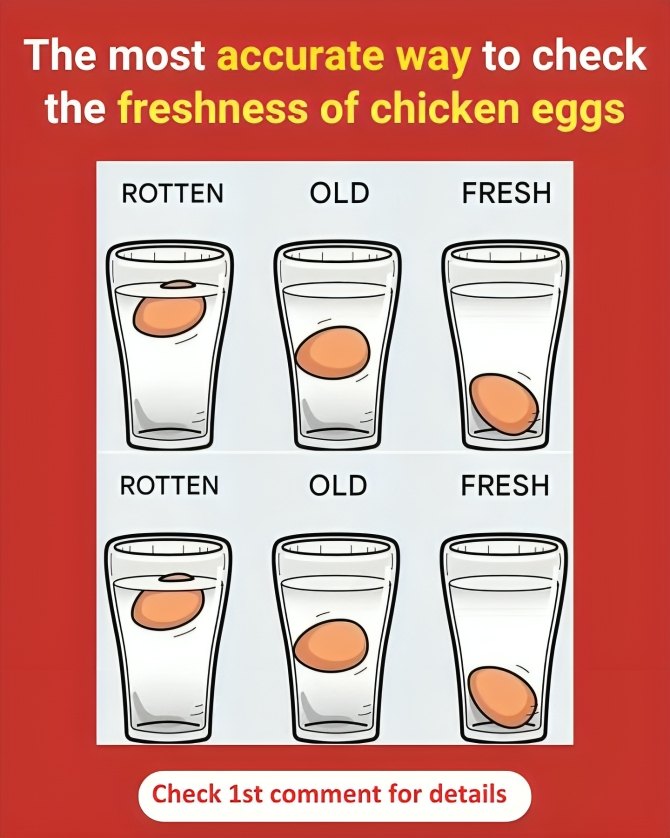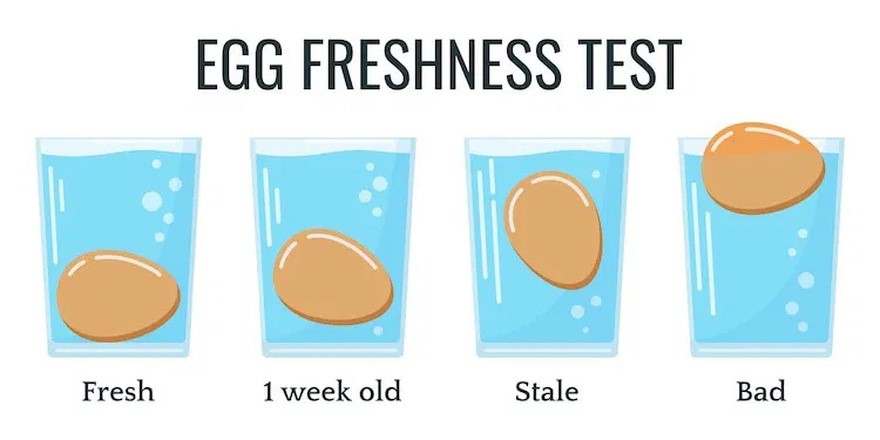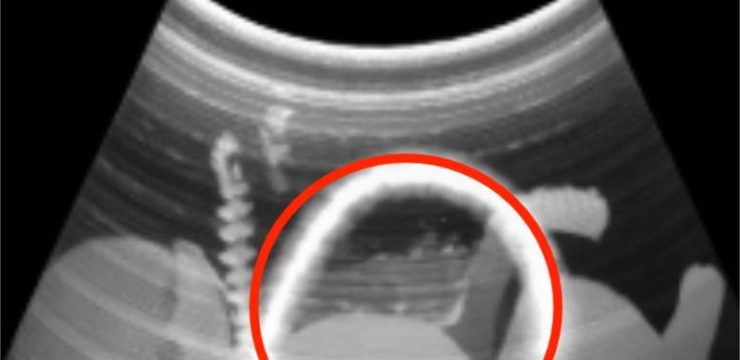Eggs are a kitchen staple—whether you’re frying up breakfast, baking your favorite cake, or whipping up a quick omelet. But as much as we rely on them, knowing whether those eggs sitting in your fridge are still good can sometimes feel like a guessing game. Thankfully, it doesn’t have to be. When it comes to checking egg freshness, there’s a reliable, no-nonsense method that stands above the rest—and it doesn’t require any fancy equipment.
Let’s break down the most accurate way to check the freshness of your chicken eggs, plus a few extra tricks to make sure you never crack open a bad one again.

Why Freshness Matters
Before we dive into the methods, it’s worth understanding why egg freshness is so important. Fresh eggs don’t just taste better—they perform better too. The whites are firmer, the yolks are rounder, and the overall structure is much more solid. This can make all the difference in recipes that depend on texture, like poached eggs or meringues.
As eggs age, the whites become thinner, and the yolk begins to flatten. That might not matter much if you’re boiling them or scrambling for breakfast, but if you’re after perfect presentation or flavor, fresher is better. Older eggs may also develop a noticeable sulfur smell, which can be a real turn-off in the kitchen.
The Float Test: The Gold Standard
If there’s one method you should count on, it’s the float test. This classic trick is widely considered the most precise way to gauge an egg’s age, and it’s super easy to do at home. All you need is a bowl of water.
How to Do It:
-
Fill a Bowl with Cold Water
Choose a deep bowl and add enough cold water to submerge the eggs completely. -
Add the Eggs
Gently place each egg into the bowl, one at a time. -
Watch What Happens
-
Fresh eggs will sink and lie flat on the bottom.
-
Slightly older eggs will stand on one end but stay on the bottom.
-
Bad eggs will float to the top—those should go straight into the trash.
-
Why This Works:
Eggshells are naturally porous. As time passes, air seeps in and forms a pocket inside the shell. The bigger the air pocket, the more buoyant the egg becomes. A floating egg usually means it’s past its prime.
⚠️ Pro Tip: Even if an egg floats, crack it into a separate bowl and check the smell and appearance before tossing it—just in case.
The Sniff Test: Quick and Clear
Sometimes, your nose knows best. The sniff test is another simple and effective way to tell if your egg has gone bad.
Here’s How:
-
Crack the egg into a clean bowl.
-
Take a sniff.
If the egg smells sulfuric, rotten, or just “off,” it’s no good—throw it out immediately. A fresh egg should have little to no odor at all.
The Shake Test: A Handy Backup
This one isn’t as scientific, but it can still give you a general idea.
What to Do:
Hold the egg up to your ear and give it a gentle shake.
-
Fresh eggs won’t make much noise.
-
Older eggs may produce a sloshing sound, as the contents have become watery and loose over time.
While not as accurate as the float test, this method can serve as a helpful double-check when you’re unsure.
Final Thoughts
So, what’s the verdict? When it comes to testing the freshness of chicken eggs, the float test is hands-down the most accurate and trustworthy method. Pair it with a quick sniff and maybe a shake, and you’ll never have to wonder whether your eggs are still safe to eat again.
Not only will these simple tips save you from a potentially stinky kitchen mistake, but they’ll also help you make the most of every egg in your carton. Because let’s face it—no one wants to gamble when it comes to cracking open an egg.
Next time you’re not sure whether to cook or toss, just float it, sniff it, or shake it. Your breakfast will thank you.






